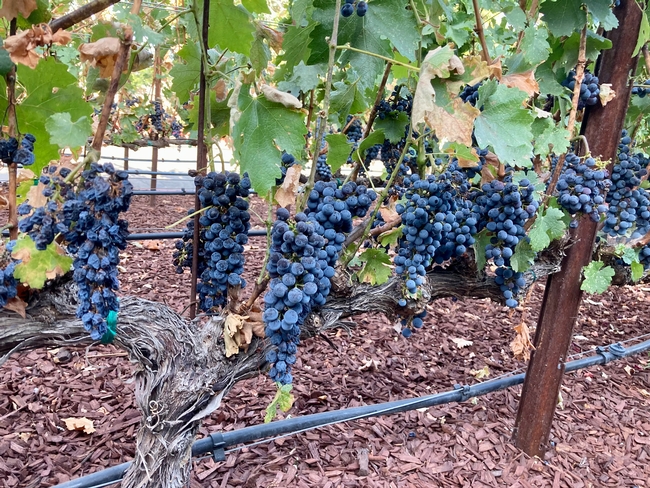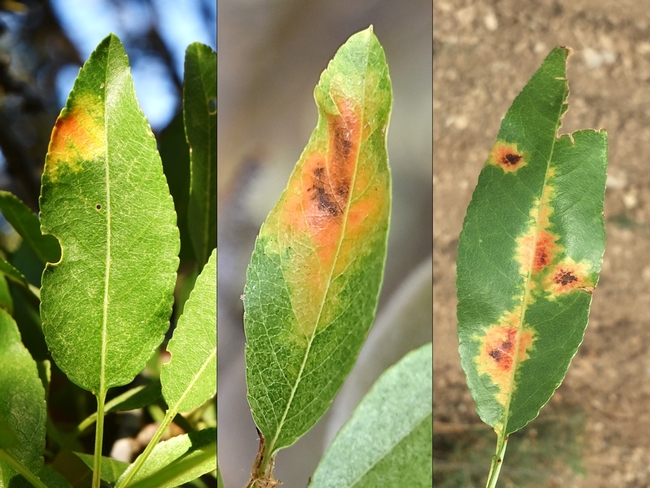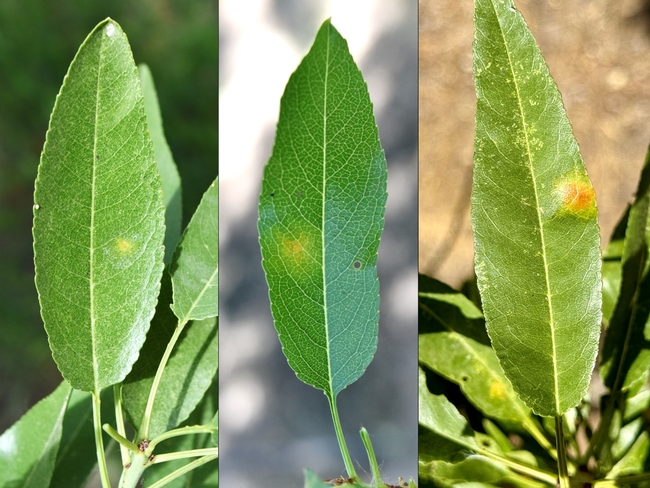UC Food and Agriculture Blogs
Can I Use Vinegar to Control Weeds?
Acetic acid, also known as vinegar, is used in products for weed control. Many people choose it because it is natural. However, acetic acid can damage skin and eyes, especially at concentrations commonly found in weed killers. What is the difference...
Paper highlights how climate change challenges, transforms agriculture
As the climate continues to change, the risks to farming are only going to increase.
That's the key takeaway from a recent paper published by a team that included UC Merced and UC Agriculture and Natural Resources researchers. The paper dives into what those challenges are, how farmers are working to address them and what should come next.
"Climate Smart Agriculture: Assessing Needs and Perceptions of California's Farmers" was first authored by Samuel Ikendi, academic coordinator, with Tapan Pathak, UC Cooperative Extension climate adaptation in agriculture specialist, as a corresponding author. Both are based at UC Merced. Pathak is also a project director of National Institute of Food and Agriculture-funded project "Multifaceted Pathways to Climate-Smart Agriculture through Participator Program Development and Delivery," which supported this study. The study appeared in the open access journal Frontiers in Sustainable Food Systems.
The needs assessment was designed to understand farmers' perceptions and experiences with climate change exposures; the risk management practices they currently use; and what tools and resources would assist them in making strategic decisions.
Of the farmers surveyed, roughly two-thirds agree climate change is occurring and requires action. Even more said they are interested in learning more about the impacts of climate change on the agricultural industry. Most respondents said they experience greater climate change impacts on their farms today compared with 10 years ago.
Farmers were very concerned with water-related issues, with those in the San Joaquin Valley, Central Coast and Inland Empire areas particularly worried about a reduction in the availability of groundwater. Increased drought severity was a very significant concern among farmers in the Inland Empire, Central Coast and Southern regions. Farmers in the North Coast and Southern regions were concerned about increased damage to crops due to wildfire.
Closely related were temperature-related issues, including crop damage due to extreme heat.
Those who farm vegetables were more concerned about water availability for irrigation, while fruit farmers were more concerned about increased crop/water stress and increased crop damage due to extreme heat.
Many respondents said they are implementing climate adaptation practices including managing water resources, maintaining soil health and making more use of renewable energy sources. They are seeking insurance and government help to pay for these adaptations and increase their agricultural resilience, the researchers wrote.
The farmers expressed interest in learning more about measures they might take to mitigate climate change. But they cited significant barriers to this work, including government regulations, high implementation cost, labor access/cost, access to water and the availability of money to pay for it.
"Climate change is significantly altering California's highly diverse agricultural landscape, posing challenges such as increased water stress, heat stress, and shifting growing seasons," Pathak said. "Climate-smart agriculture practices can alleviate some of those stresses."
But, he said, research and UC Cooperative Extension efforts only have value if they lead to enhanced climate-informed decision-making at the local level.
"Assessing their level of knowledge, perception and needs will help in tailoring research and extension activities that are most relevant to farmers on the ground," Pathak said. "Results from this study could also provide important policy insights on financial incentives and technical assistance."
Almond crop yields threatened by disease new to California
Detection of fungus causing red leaf blotch spurs call for grower vigilance
Symptoms of red leaf blotch (RLB), a plant disease caused by the fungus Polystigma amygdalinum, have been observed for the first time in California across the Northern San Joaquin Valley.
Molecular DNA testing by the laboratory of Florent Trouillas, University of California Cooperative Extension fruit and nut crop pathology specialist, has detected P. amygdalinum. Pest identification was confirmed by the California Department of Food and Agriculture and U.S. Department of Agriculture.
The disease, named for the characteristic orange-to-dark red blotches that appear on infected leaves, is typically nonlethal for trees but has been a long-standing problem for almond-growing regions across the Mediterranean. Causing trees to lose their leaves prematurely, the fungal pathogen can significantly diminish crop yields in the current year and the next.
“It is one of the most severe diseases of almonds for Spain and the Middle East,” said Trouillas, an associate professor in the UC Davis Department of Plant Pathology. He recently co-authored an explanatory article on the UCCE San Joaquin Valley Trees and Vines blog.
With symptomatic trees seen in multiple orchards across Madera, Merced, San Joaquin and Stanislaus counties, Trouillas said RLB is already “somewhat widespread.”
“From the first observations so far, it seems like it affects some of the most-planted cultivars, like Nonpareil and Monterey,” he added. “We've observed it in a diversity of cultivars already.”
UC Cooperative Extension specialist urges taking preventive measures
According to Trouillas, RLB caused by P. amygdalinum is “highly specific” to almond trees, and generally only affects their leaves. Infection typically happens at petal fall, when small leaflets are first emerging and most susceptible to disease. After the pathogen's latent period of about 35 to 40 days, the first symptoms appear – small, pale-yellow spots on both sides of the leaves.
Those blotches become yellow-orange and then reddish-brown in the advanced stages of the disease during June and July. Now, with RLB symptoms becoming more prominent, Trouillas and UC Cooperative Extension advisors across the Central Valley have seen an uptick in calls.
“PCAs [pest control advisers] have been confused because they've never seen anything like this,” said Trouillas, noting that the yellow-orange-red blotches are symptoms unique to RLB and cannot be confused with other known almond diseases.
Applying fungicides after RLB symptoms appear is ineffective, Trouillas said. The best thing growers can do at this point is to report symptomatic trees to researchers so they can track the prevalence and distribution of the disease.
Growers who see signs of this new disease in their orchard should contact their local UC Cooperative Extension farm advisor.
Preventive measures are the best way to manage RLB, Trouillas said. He urges concerned growers to think ahead to next winter/spring and plan for fungicide applications at petal fall and – if rains persist – also at two weeks and five weeks after petal fall. Fortunately, those are the same three key timings for managing other diseases, like shot hole and almond anthracnose.
“Because RLB is something that is introduced and potentially aggressive, it will be important for growers to keep that in mind next year and be on schedule for next year's spraying program,” Trouillas said.
Additional information on RLB can be found at https://www.sjvtandv.com/blog/first-detection-of-red-leaf-blotch-a-new-disease-of-almond-in-california.
What are exotic and invasive pests?
Exotic and invasive pests threaten California's natural environments, agricultural production, structures, landscapes and gardens. Exotic pests are organisms introduced into an area beyond their natural range and become pests in the new...
Urban Pesticides, Fertilizers, and Water Quality
Pesticides and fertilizers applied around homes, residential or commercial landscapes, school sites, and other areas can enter our creeks, rivers, and oceans, degrading water quality. While pesticides and fertilizers can be useful in controlling pests...





